BEES Please Questionnaire User Guide
0693-0036-BEES_Please_Questionnaire--User_Guide.docx
BEES (Building for Environmental and Economic Sustainability) Please
BEES Please Questionnaire User Guide
OMB: 0693-0036

Questionnaire
User Guide
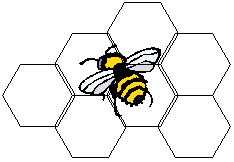
Anne Landfield Greig
Four Elements Consulting, LLC
![]()
Joshua Kneifel
U.S. Department of Commerce
National Institute of Standards and Technology
March 2014
CONTENTS
Foreword
SECTION I - Basic LCI concepts
1 Definition of the System Boundaries 3
2 Allocation Rules 4
SECTION I - Basic LCI concepts
3 Site Data 1
4 Utilities Data 5
5 Product data 6
6 Reporting Rules 6
7 Possible Sources of On-site Information 8
OMB CONTROL NO: 0693-0036 Expires XX/XX/XXXX. The BEES Please information collection is authorized by the U.S. Office of Management and Budget. Your response is voluntary. Public reporting for this collection of information is estimated to average 63 hours per response, including the time of reviewing instructions, searching existing data sources, gathering the data needed, and completing and reviewing the collection of information. Send comments regarding this estimate or any other aspects of this collection of information, including suggestions for reducing the length of this questionnaire, to the National Institute of Standards and Technology, 100 Bureau Drive, Stop 3220, Gaithersburg, MD 20899-3220 and the U.S. Office of Management and Budget, Office of Information and Regulatory Affairs, Washington, D.C. 20503.
The National Institute of Standards and Technology (NIST) Engineering Laboratory is gathering data to develop environmental profiles for building products. The goal is to help manufacturers and designers develop and select cost-effective green building products. The data gathered from this questionnaire will be incorporated into the NIST BEES (Building for Environmental and Economic Sustainability) software product for your review before publication.
Please return your completed questionnaire to [email protected]. If email is not possible, please copy the completed questionnaire to a blank compact disc and mail to:
Joshua Kneifel
Applied Economics Office
Engineering Laboratory
100 Bureau Drive, Stop 8603
National Institute of Standards and Technology
Gaithersburg, MD 20899-8603
For assistance in completing the questionnaire, contact Joshua Kneifel at [email protected] or (301) 975-6857.
SECTION I
BEES quantifies environmental performance using the multi-disciplinary approach known as life-cycle assessment (LCA). LCA is a “cradle-to-grave,” systems approach for measuring environmental performance that is standardized by the International Standards Organization (ISO).1 The approach is based on the belief that all stages in the life of a product generate environmental impacts and must therefore be analyzed, including raw materials acquisition, product manufacture, transportation, installation, operation and maintenance, and ultimately recycling and waste management. An analysis that excludes any of these stages is limited because it ignores the full range of upstream and downstream impacts of stage-specific processes.
The strength of environmental life-cycle assessment is its comprehensive, multi-dimensional scope. Many green building claims and strategies are based on a single life-cycle stage or a single environmental impact. A product is claimed to be green simply because it has recycled content, or claimed not to be green because it emits volatile organic compounds (VOCs) during its installation and use. These single-attribute claims may be misleading because they ignore the possibility that other life-cycle stages, or other environmental impacts, may yield offsetting impacts. For example, the recycled content product may have a high embodied energy content, leading to resource depletion, global warming, and acid rain impacts during the raw materials acquisition, manufacturing, and transportation life-cycle stages. LCA thus broadens the environmental discussion by accounting for shifts of environmental problems from one life-cycle stage to another, or one environmental medium (land, air, water) to another. The benefit of the LCA approach is in implementing a trade-off analysis to achieve a genuine reduction in overall environmental impact, rather than a simple shift of impact.
The LCA methodology involves four steps.2 The goal and scope definition step spells out the purpose of the study and its breadth and depth. The inventory analysis step identifies and quantifies the environmental inputs and outputs associated with a product over its entire life-cycle. Environmental inputs include water, energy, and other resources; outputs include releases to air, land, and water. However, it is not these inputs and outputs, or inventory flows, that are of direct interest. We are most interested in their consequences, or impacts on the environment. Thus, the next LCA step, impact assessment, characterizes these inventory flows in relation to a set of environmental impacts. For example, the impact assessment step might relate carbon dioxide emissions, a flow, to global warming, an impact. Finally, the interpretation step combines the environmental impacts in accordance with the goals of the LCA study.
We need your help with the second LCA step, inventory analysis. During this step, a life cycle inventory is compiled which records material and energy flows into and out of a product system. Based on your completed questionnaire, NIST will compile a draft life-cycle inventory for your product for review by your firm and validation by experts. With your permission, the final life-cycle inventory for your product will be included in the BEES software, which conducts a life-cycle impact assessment to estimate the impacts of your inventory flows. Finally, BEES facilitates the LCA interpretation step by permitting the user to synthesize impact scores into an aggregate environmental performance score for your product.
This section defines the scope of the BEES LCA to give context to our request for your help with inventory analysis.
Life-cycle assessment evaluates environmental impacts across all stages in the life of a product: raw materials acquisition, product manufacture, transportation, use, and end of life. Since you are not likely to have detailed environmental performance data for the extraction and production of the raw materials you consume, we are not asking for these data. Rather, this questionnaire includes data mainly on the product manufacturing step you control, from raw materials entering your plant to the finished products ready to be shipped from your plant. Figure 1 displays the processes at your facility of interest. Note that the blue box (“black box”) should encompass all the production processes contributing to the production of your product.
F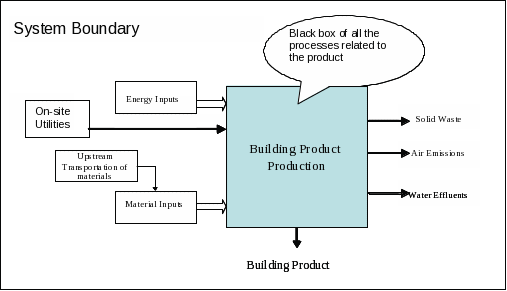 igure
1 Facility System
Boundaries
igure
1 Facility System
Boundaries
The questionnaire also contains optional questions on the use phase of your product (including product installation and maintenance), as well as questions on its disposition at the end of its useful life (including recyclability and product density for solid waste concerns).
The final life-cycle inventory NIST compiles for your product will include all life-cycle stages, with raw material acquisition data collected from standard databases, and any missing use and end-of-life stage data based on published sources and industry interviews.
We are asking for data related to the environmental inputs and outputs of your product’s manufacturing process. It is understood that a process may produce two or more products at the same time (co-products). If so, the inputs and outputs for the process need to be split, or allocated, to indicate the flows specific to the building product in question. This allocation will be done by NIST once your completed questionnaire is received. Therefore, report information for the entire production process, including the product for BEES and any other products produced by the same process.
Your manufacturing process may use some on-site utilities that are shared by the entire plant and, therefore, by other products that the plant may produce. Examples of on-site utilities include:
a site power plant generating steam, electricity, compressed air, or hot water which is consumed by the whole site,
a general wastewater treatment plant which treats effluents coming from the entire site.
In an LCA study, since on-site utilities usually serve several processes, their input and output quantities are allocated among processes. You will need to make this allocation. The Utilities section below will address data for this part of the questionnaire.
SECTION II
The BEES questionnaire consists of four data sections:
General Data
Site Data
Product Data
Utilities Data
The General Data section gives basic information on your company, contact person, and product. Once NIST receives your completed questionnaire, our expert consultants will review your data for completeness, accuracy, and consistency, and may have questions for your contact person.
Detailed instructions for completing the remaining sections follow. Note: Parts of the questionnaire may not be relevant to your process.
The figure below displays the structure of the Site Data Questionnaire. The columns for data input will be described in turn.
Figure 2 Site Data Questionnaire Structure
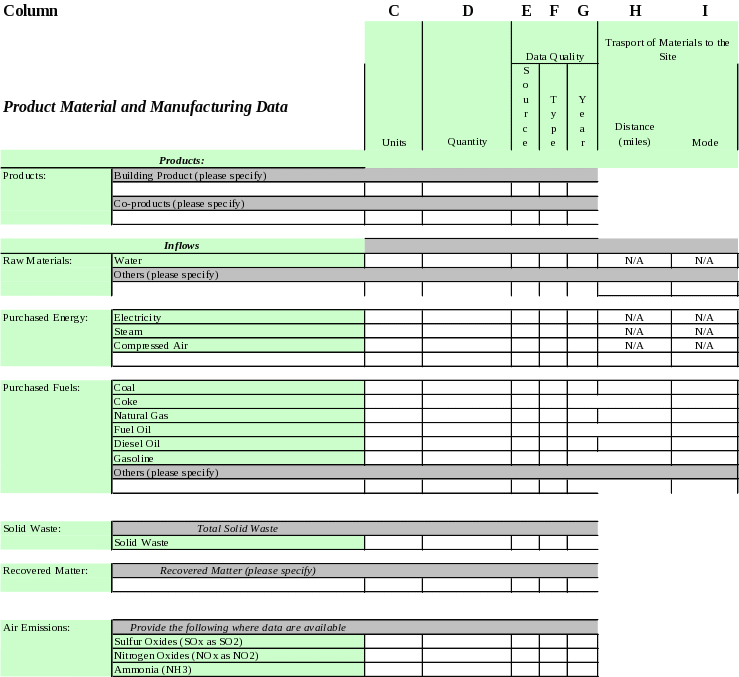
Only white fields should be filled in. Additional columns or rows can be added if space is needed for more inputs, co-products, or additional on-site utilities. No rows should be added for air emissions or water effluents since these are fairly comprehensive lists.
Column C: Units
The “Units” column requests the units corresponding to the quantity reported in column D. It is important that units be used that permit conversion to inflow and outflow quantities. For example, if consumption of a raw material is reported in pounds per year, then yearly production of the product should also be reported. If pollutants are reported as concentrations (e.g., SOx in ppmv), then the corresponding volume should also be indicated (a row for volume of flue gas and wastewater is included in the questionnaire).
Quantity needs to be filled with in values corresponding to the product’s production quantity.
Columns E, F and G: Data Quality
Data quality measures include data source, type, and year, discussed below.
Data Source
Data source refers to where the data originated. In each cell, use the following letters to represent the appropriate category:
-
F
At the plant
L
From literature
O
Other (specify in the questionnaire)
Data Type
Data type refers to how you obtained the data point. In each cell, use one of the following letters to represent the appropriate category:
-
M
Measured (e.g., electricity meter)
C
Calculated (emissions factors, mass balance, …)
E
Estimated (estimation has been established based on approximations, e.g. transportation distance)
S
Shared or apportioned (data for 2 processes are estimated)
O
Other (specify in the questionnaire)
Year
Provide the year the reported data point represents. Usually, it is best to provide data for the most recent fiscal year for which it is possible to get complete/most accurate information. Overall, it is best to report data all from 1 year, but if you have to use data from different years, report the information and specify the year(s).
Column H and I: Transport of Materials to Site
Columns H and I ask for information on transportation of the raw material to the site. The distance the material is transported and the mode of transportation (truck, rail, barge, etc.) are requested for each material transported to the site. Be sure to remember to specify units (e.g., kilometer or mile).
Data Categories to Report
Products and Coproducts
List the product (and coproducts) at your facility and their quantity produced. You may report them in the unit you prefer (e.g., yard, square foot, pound, kilogram, etc.). Note: the rest of the data on this Site Data sheet must be reported in terms of the production quantity reported here.
Inflows
Raw Materials. Provide the quantities of raw materials consumed for processing or manufacturing the product. This includes materials in the product plus ancillary materials such as lubricating oil. For recycled materials, specify the percentage of recycled content. Provide the data in mass units, per your quantified output.
Energy. Provide the quantities of purchased energy and purchased fuels consumed during the processing or manufacturing of the product. If you have a special type of energy (i.e., all hydropower) or are buying electricity from a special grid, please note this. Also, if your energy source (i.e., natural gas boiler) is especially efficient (or inefficient), state so and provide us with more details. For energy flows, please indicate if the quantity represents Net Caloric Value (NCV) or Gross Caloric Value (GCV)3.
Outflows
Waste not recovered. Report information on the solid waste produced. Provide waste in dry weight.
Recovered material. Recovered material includes any material reused/recycled in the same process (i.e. recycled as a closed loop) or as a reused/recovered/recycled in a process not related to your product. In any event, provide what the fate is for each recovered material. We will model the closed loops accordingly. For recovered energy, provide any information regarding whether processes produce energy that goes to other processes. This information will be used to give the process “credit” for that energy used elsewhere.
Air Emissions. Provide process-related air emissions, including what a baghouse or other air pollutant scrubbing technology might not have captured, other particulates, VOC’s, metals in air, etc. Do not worry too much about fuel combustion-related air emissions (e.g., CO2…), since during LCI modeling we apply our own data sets on fuel combustion to assure consistency in fuel-related emissions across all BEES products.
In the questionnaire are two sets of air emissions lists. The first contains air emissions for which we have found that facilities generally may have data (measured or calculated). Please provide data wherever possible. The second list is an exhaustive list of air emissions. At the very least, we request that you scroll down this list, and wherever you may have data available for an emission, please provide it.
For best quality data, we strongly encourage you to try to fill in all of the blanks for air (and water) pollutants, even if no figure is available. There are three possible entry types:
The pollutant outflow is relevant and its quantity known.
The outflow is not applicable (“N/A”), that is, it cannot exist because the input it comes from is not consumed. For example, no SOx could be released to the air if the fuels that are combusted do not contain any sulfur compounds.
Ouflow quantity data are not available (“?”), that is, the flow may exist but has never been measured, or it cannot be calculated or assessed precisely.
In column D, enter the quantity (in the units specified in column C), “N/A,” or “?”. For the first possibility, a zero quantity may be valid if:
the flow has been measured but is under the detection limit,
the flow has been calculated and found equal to zero,
the flow is cited in a bibliographic reference as being equal to zero.
Water Effluents. Provide the total wastewater quantity generated by the process (in volume units). For the effluents, if you have an on-site wastewater treatment plant (WWTP), then report the effluents in the utility section under WWTP. If you do not have an on-site WWTP, state so and provide the effluents as they leave your facility, and state what their fate is (direct to water body or to an off-site WWTP). If it is an off-site WWTP, we will use our WWTP reduction factors for the modeling.
Again, for the best data quality, we request that you complete the longer list of water effluents, using the process described above.
Transportation
Provide the distances and modes of transport corresponding to the raw material inputs. If you don’t know distances, estimate them.
On-site utilities which may apply to your products could include:
Electric or co-generation plant;
Wastewater treatment plant
Air scrubbing equipment
On the Utilities spreadsheet, provide all inputs and outputs for the utility plant. Inputs, outputs, and the organization of the worksheet are similar to the Site Data worksheet.
Please give the % the utility is applied to the product you are reporting on, shown below:
Figure 3 Example of a Utility and its Allocation
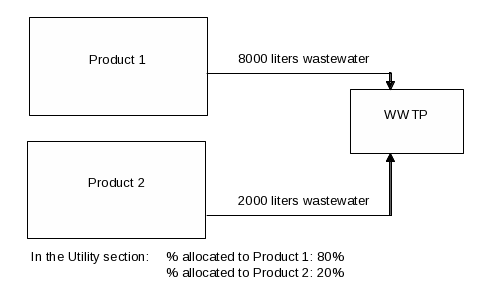
Please use the above approach for all of your utilities pertaining to the product for which you are collecting data.
IF a utility is dedicated to only the product for which you are collecting data, then you may include those inputs and outputs as part of your product’s process black box (see Figure 1). Your choice for this is to put all inputs and outputs of the dedicated utility to the utilities spreadsheet (indicating 100% for the process), or including that with the product’s process inputs and outputs (and indicate this has been done).
The use phase data sheet begins with general questions about the building product including use and installation. Specifically, the questionnaire asks for:
The useful life of the product in years, months, etc.
The density of the product, for conversion of product weight to product volume for solid waste computations. Additionally, whether the product is considered recyclable, and if so, the percentage of the product currently being recycled at the end of its useful life.
Transportation distances and modes of transportation for transport of the finished product to the building site or customer.
The manufacturer’s suggested retail price, which is used for economic performance calculations.
The use phase questionnaire also asks about installation and maintenance practices for the product:
Any installation energy or other manufacturer-recommended installation materials (e.g., bonding agent for floor tiles, nails for roofing materials).
Product maintenance schedule and requirements (e.g., floor wax for quarterly waxing of floor coverings).
Reporting in this sheet is similar to the Site Questionnaire, i.e., quantity and units are required in addition to data quality information.
1) Reporting specifics: Some Flows may be Neglected
While it is impossible to try to record all the inflows to the production process, we still want to capture as many inputs as possible. Decision rules have been established, as follows, to restrict data collection to the set of inputs that will capture information we might overlook, while ensuring we meet our cut-off goal.
Inflows
Report all energy inputs, including electricity, steam, and compressed air;
Record 99.5 percent (by weight) of total production process inputs;
Record inputs that are small yet have an environmental burden. Typical criteria for the importance of an environmental burden is the purchase cost is high, since this may indicate scarce resources or high energy consumption or obscure/expensive chemicals; and
Report inputs, even if small, if the data are available.
Solid Waste and Co-products
Solid waste or co-products for which the accumulated tonnage represents less than 1% (by weight) of the total waste or co-product tonnage for the production process need not be recorded.
2) Exclude general site operations and capital equipment
Flows not directly related to industrial activities are not taken into account, e.g., cafeteria, building heat, and restroom operations. If these are included because you could not separate this from, e.g., total electricity, state so in the questionnaire.
Capital equipment associated with the site facility should also be excluded, with the exception of capital equipment consumables (example: in the mining industry, truck tires are often replaced. These are considered consumable capital equipment).
Internal flows for a building product production process should not be reported in the questionnaire. This principle applies to both inflows (materials and energy) and outflows. For example, as indicated by its depiction in red in Figure 3 the amount of steam energy entering the production process should not be reported because it is an internal flow subject to double counting. If the steam is produced in a boiler, its use is already accounted for through the allocated boiler inputs (e.g., natural gas or heavy fuel oil) and emissions which are recorded in the questionnaire.
Figure 4 Internal Flows – Avoid Double-Counting
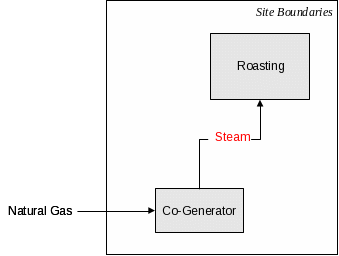
4) Pay attention to how you report material inputs
General inputs
If possible, provide the chemical composition for inputs in addition to their commercial names. You may also provide their function. When chemical composition is not available, enter the consumable under its function name followed by the term “unspecified” (e.g. “coagulating agent: unspecified”, “anti-corroding agent: unspecified”). If an input is supplied as diluted with water or in an amorphous material, report it in pure terms, that is, 100% of weight. If you prefer, provide the full amount, but be sure to provide the dilution percentage.
Water used
Report only make-up process (or cooling water) that has been lost in the system; be careful not to include water that is being recycled somewhere in the facility.
The following table identifies the business units most likely to have the information necessary to provide the data requested in this questionnaire.
-
Flow Category
Business Unit
Raw materials and energy
On-site utilities (power plants, etc.)
-- Purchasing Department, Production Department
-- Energy Department for power plant
-- Environmental Department for wastewater treatment plant
Air emissions
Environmental Department
Water effluents
Environmental Department
Solid Waste
Environmental Department
1 ISO 14040:2006, the International Standard of the International Standardization Organization, Environmental management. Life cycle assessment. Principles and framework, and ISO 14044:2006, Environmental management – Life cycle assessment – Requirements and guidelines.
2 ISO 14040:2006.
3NCV or Low Heat Value is the energy recoverable by the combustion of a unit quantity of fuel when the combustion product (the exhaust) is not brought back to the ambient temperature and pressure. GCV or High Heat Value is the total quantity of energy released by the combustion of a unit quantity of fuel, as measured by a bomb calorimeter. The difference between GCV and NCV is the vaporization latent heat of the water contained in the exhaust and the exhaust sensible heat.
| File Type | application/vnd.openxmlformats-officedocument.wordprocessingml.document |
| File Title | BEES PLEASE |
| Author | Barbara C. Lippiatt |
| File Modified | 0000-00-00 |
| File Created | 2021-01-28 |
© 2025 OMB.report | Privacy Policy